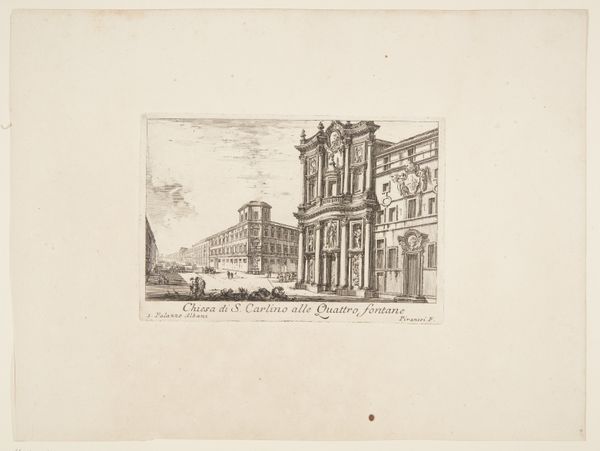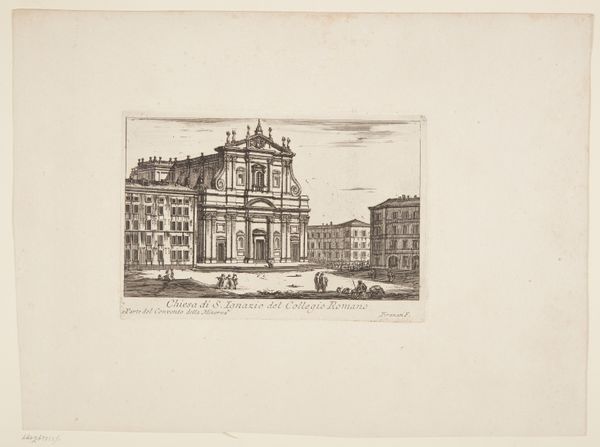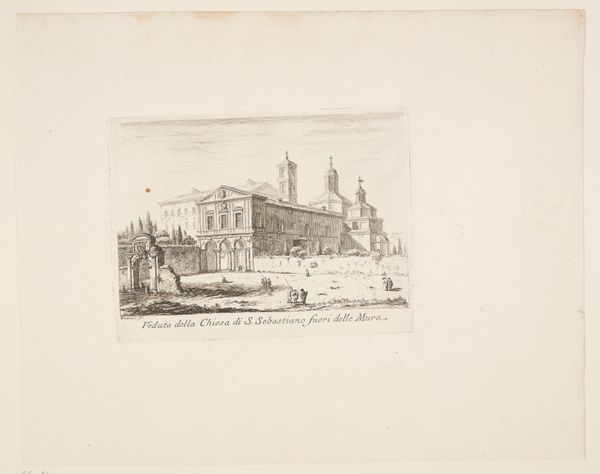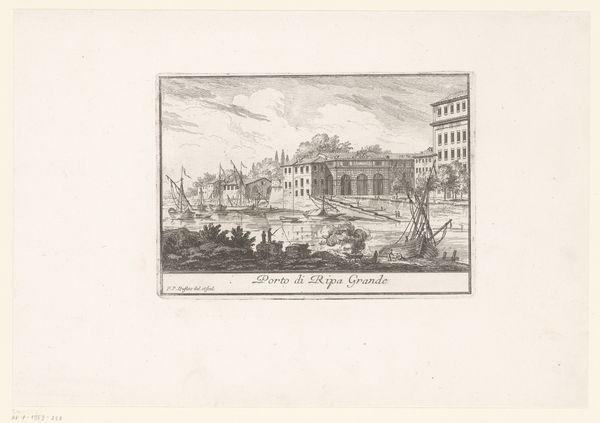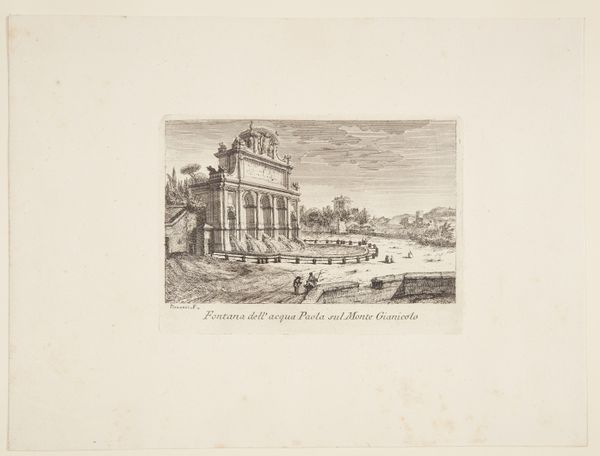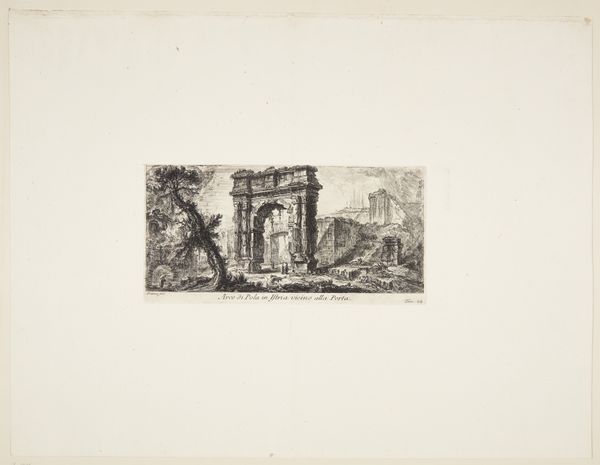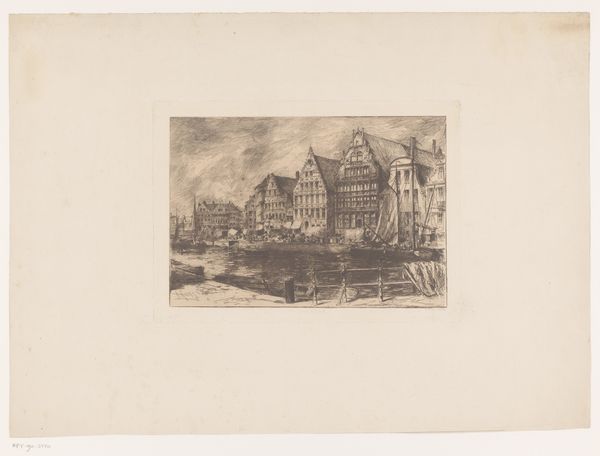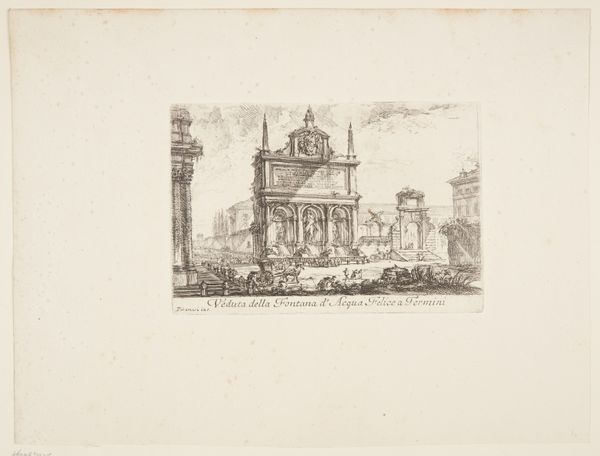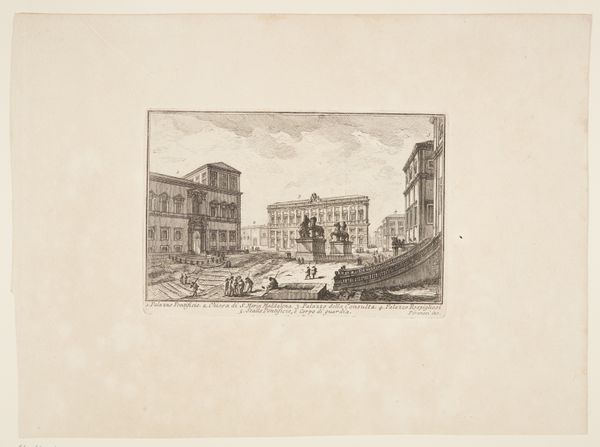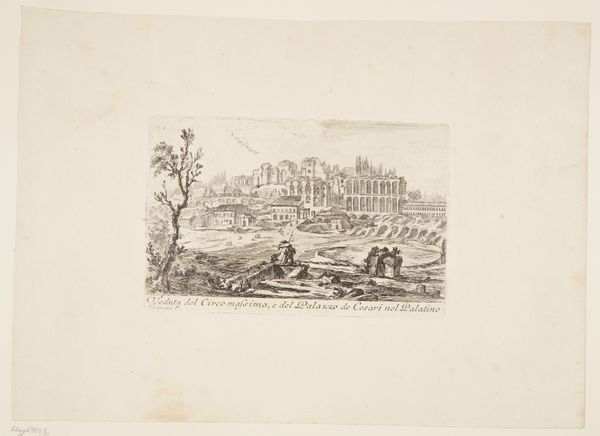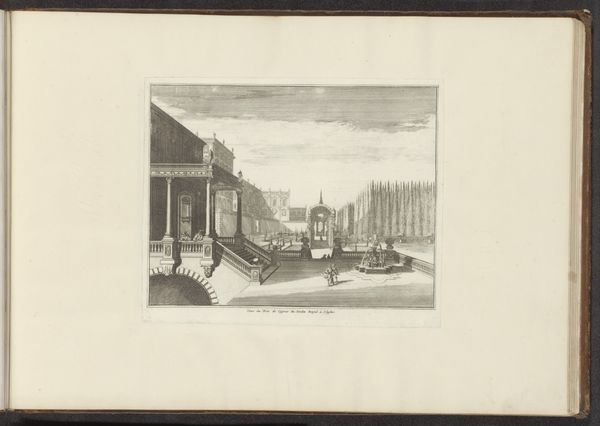
print, etching, engraving
#
baroque
# print
#
etching
#
landscape
#
etching
#
cityscape
#
engraving
Dimensions: 113 mm (height) x 190 mm (width) (plademaal)
Curator: What a fascinating depiction of Rome. This is Giovanni Battista Piranesi's "View of St. John Lateran," an etching and engraving created between 1741 and 1748. The artwork currently resides in the SMK, Statens Museum for Kunst. Editor: There's a strange dreamlike quality to this cityscape. Despite the detail, the etching appears delicate, even ghostly. It certainly captures a specific grandeur, but somehow muted. What feeling do you believe Piranesi hoped to evoke here? Curator: Piranesi, as an artist, wasn't just rendering the scene but commenting on the intersection of power, history, and the gaze. Rome itself was – and still is – heavily layered with political and religious implications. I would imagine Piranesi was interested in highlighting those layers, the constant play between architectural presence and the individuals navigating it. Notice how small he makes the people. Editor: Yes, the figures do seem to diminish the imposing structure. He employs such pronounced baroque symbols of status. All those sculptures above—those classical pillars evoking permanence, but etched so lightly that they hint at impermanence, don't they? Almost like an imposing yet fading cultural memory. Curator: Precisely! One could argue that Piranesi is speaking to the cyclical nature of power. Consider how he, as an artist, chose to portray this bastion of the papacy during a specific time. His visual interpretation itself becomes an exercise of power dynamics. His perspective. Editor: It brings to mind Walter Benjamin's "The Work of Art in the Age of Mechanical Reproduction." Prints made artworks available to the masses and disrupted artistic elitism. Here the Church's physical dominion is captured using this emerging and inherently more egalitarian medium, which undermines some of its meaning. Curator: I hadn't considered the accessibility and subversive undercurrent inherent to the medium, especially given how fraught artistic freedom could be! That's brilliant. For me, situating this work within those discussions—about visual representation and how the access to it shifts perception and challenges those historical power imbalances is key. Editor: Absolutely, these enduring monuments also function as potent cultural symbols. Symbols always have the power to both oppress and liberate depending on context and audience. So much for one to think about. Curator: Indeed. Hopefully, we’ve inspired more contemplation on the dynamics interwoven within this captivating print. Editor: Agreed, It's a complex work that offers us insights into how we experience visual culture, power and symbols.
Comments
No comments
Be the first to comment and join the conversation on the ultimate creative platform.

